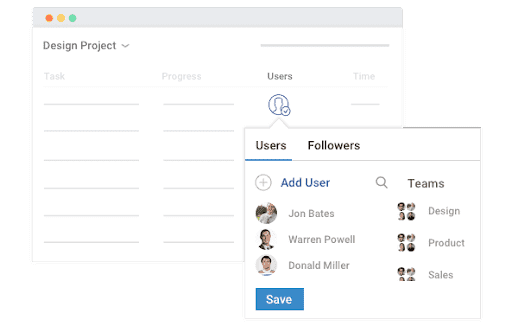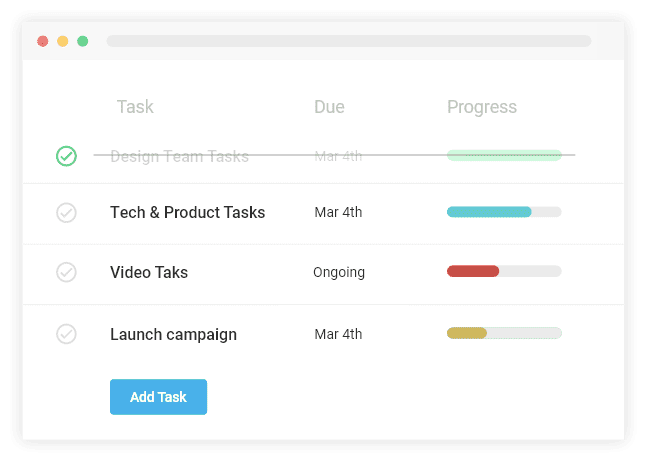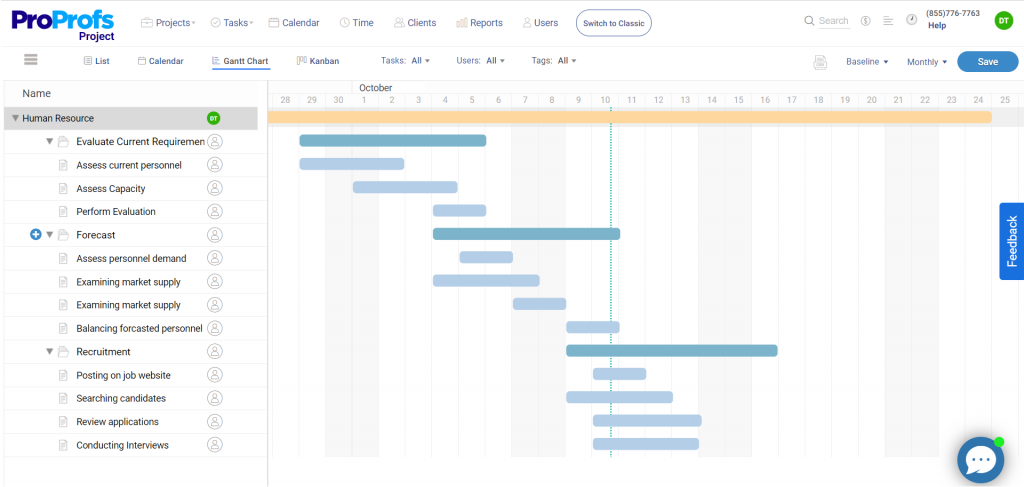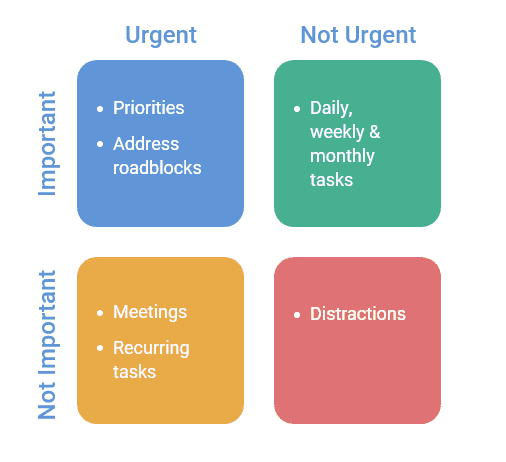Time is one of our most valuable resources, yet it often feels like we never have enough. With constant demands, distractions, and an ever-growing to-do list, keeping up can seem overwhelming.
As working professionals, we juggle deadlines, manage endless tasks, and often struggle to carve out even a moment for ourselves. It can feel like we’re always racing against the clock.
But what if you could take charge of your time and reclaim your day?
In this blog, we’ll share the top 10 time management strategies that can help you achieve more, reduce stress, and find that much-needed work-life balance.
What Is Time Management?
Time management refers to effectively utilizing the available time to plan projects and achieve specific tasks and activities. The practice aims to achieve maximum productivity with minimum effort and resource waste.
Think about it. You only have 24 hours in a day. While the hours may look excessive, if you write off the time you require to perform essential activities such as sleeping, eating, traveling to work, and more, the time you have in hand to complete work will come down to about seven to eight hours. So, the battle is to complete your work within this definite time.
Here, having a time management strategy in place helps save the day. When done right, you’ll not only be able to achieve work on time but also get more work done in less time.
Benefits of Time Management
Effective time management isn’t just about ticking off tasks on a to-do list; it’s about maximizing productivity and finding a balance between work, study, and personal life. Here’s how mastering time management can transform your life:
1. Stress Reduction: From Overwhelmed to In Control
When you’re constantly juggling tasks and feeling behind, stress becomes a constant companion. Time management provides a framework for prioritizing, organizing, and tackling your responsibilities, reducing that feeling of being overwhelmed.
Imagine this: instead of feeling anxious about a looming deadline, you’ve broken the project into manageable steps, scheduled dedicated time for each, and are confidently working through it. That’s the peace of mind that comes with effective time management.
2. Enhanced Productivity: Achieve More, Effortlessly
Time management isn’t about squeezing every last second out of your day; it’s about working smarter, not harder. By focusing on the right tasks at the right time, you can accomplish more with less effort.
Think of it like this: you have a limited amount of energy and focus each day. Time management helps you direct those resources towards your most important tasks, leading to greater efficiency and a sense of accomplishment.
3. Laser-Sharp Focus: Minimize Distractions, Maximize Concentration
In our hyper-connected world, distractions are everywhere. Emails, notifications, social media, and even our own wandering thoughts can derail our focus and hinder productivity.
Time management techniques help you create an environment conducive to concentration. By setting boundaries, eliminating distractions, and practicing mindfulness, you can improve your focus and produce higher-quality work.
4. Goal Achievement: Turning Dreams into Reality
We all have goals, whether it’s landing a dream job, writing a book, or simply spending more time with loved ones. Time management provides the structure and discipline needed to turn those aspirations into reality.
By setting clear goals, breaking them down into actionable steps, and scheduling time for consistent progress, you can transform your dreams into tangible achievements.
5. Work-Life Harmony: Finding Balance in a Busy World
It’s easy to get caught up in the hustle and bustle of work and neglect other areas of our lives. Time management isn’t just about work; it’s about creating space for the things that truly matter.
By prioritizing your time, you can ensure that you have enough time for family, friends, hobbies, and self-care. This leads to a more balanced and fulfilling life, where you feel energized and engaged in all aspects of your life.
Why Is Time Management Important
Did you know that over 34% of professionals waste between 2 and 5 hours per week on pointless, unproductive calls or meetings? This is precisely why you need to work smarter (and not harder) to make the most of your time at work.
Here are some proven benefits of managing your time the right way. Here we go!
1. Better Focus
Managing time effectively is crucial for working individuals, especially those in leadership roles. Juggling multiple responsibilities – whether it’s being pulled into urgent meetings or getting looped into lengthy email threads, can cause disruptions. With this, your individual work goes for a toss. Also, due to these distractions, you may have to postpone some critical tasks, delaying projects by days and weeks. A good time management strategy ensures that you plan your schedule and direct your best efforts to work as intended.
2. Higher Productivity
Eliminate regrets at the end of your day, thinking about how you could have put in more effort. Instead, close the day while feeling happier and content by effectively managing time and delivering work as expected. Time management is a sure-shot way to be in control of your workflow. Delegating time for different tasks during the day will help you be more productive at work. Set tasks and aspire to achieve them in the predefined time.
3. Less Stress
The inability to deliver quality content within the set timeline is one of the key factors contributing to daily stress at work. One poor-quality task can have rippling effects on other lined-up tasks, pushing you into a black hole of sub-quality output. Time management helps you manage your work hours, prioritize critical tasks, and stay focused on the work that matters. This prevents tasks from piling up and thereby reduces stress.
4. Reduces Procrastination
The right time management strategies help you organize and prioritize tasks to accomplish goals on time. It simplifies how you execute your projects and speeds up every task and activity you commence. Thus, managing time effectively helps you commit and take on tasks proactively, avoiding procrastination at any stage.
5. Improved Performance
While juggling multiple tasks simultaneously, you may end up compromising your performance. With effective time management strategies, you can deliver more work than expected while putting in less effort to achieve the same amount of work.
Common Time Management Challenges
We all face hurdles in our quest to become time management masters. Recognizing these common challenges is the first step to conquering them and developing habits that lead to greater productivity and peace of mind. Here are some of the most frequent obstacles we encounter:
1. Procrastination: The Thief of Time
Procrastination – that all-too-familiar feeling of putting things off until the last minute, even when we know it’ll lead to stress and rushed work. Whether it’s fear of failure, perfectionism, or simply a lack of motivation, procrastination can derail our best intentions and leave us feeling overwhelmed.
2. Distractions: The Enemy of Focus
With increased connectivity comes more distractions. When we are constantly facing a barrage of notifications from our devices, it’s easy to lose focus and get sidetracked from the task at hand. These interruptions disrupt our concentration, fragment our attention, and ultimately hinder our productivity.
3. Poor Planning: The Lack of Direction
Without a clear roadmap for your day, it’s easy to feel lost and overwhelmed, leading to a chaotic approach to work. If you’re constantly reacting to urgent tasks instead of proactively prioritizing your responsibilities, it can result in missed deadlines, inefficient use of time, and a general sense of being out of control.
4. Perfectionism: The Pursuit of the Impossible
While striving for excellence is admirable, perfectionism can be a major obstacle to effective time management. The relentless pursuit of flawlessness can lead to endless tweaking, procrastination, and an inability to complete tasks efficiently. It’s important to remember that “done is better than perfect” in most cases.
5. Taking On Too Many Responsibilities: The Overcommitment Trap
It’s tempting to please everyone and take on every request that comes our way. However, overcommitting ourselves can spread us too thin and make it impossible to manage our time effectively. Learn to say “no” to requests that don’t align with your priorities to protect your time and energy.
6. Lack of Self-Awareness: The Blind Spot
Sometimes, the biggest challenge to time management is a lack of understanding of our own work habits and tendencies. We may not be aware of how we’re actually spending our time, where we’re losing productivity, or what our peak performance times are. Developing self-awareness is key to identifying areas for improvement and implementing effective time management strategies.
7. Inefficient Workflows: The Bottleneck Effect
Our work processes and systems can also create time management challenges. If we’re using outdated tools, relying on cumbersome processes, or lacking effective organization systems, it can lead to wasted time and reduced efficiency.
8. Lack of Boundaries: The Inability to Say “No”
Nowadays, it’s mostly remote work and flexible schedules. While that may seem like a blessing, it can also be difficult to maintain clear boundaries between our professional and personal lives. This can lead to constant work creep, where we’re always “on” and never truly able to relax and recharge.
By acknowledging these common challenges and taking proactive steps to address them, we can overcome these obstacles and tap into our full potential for productivity and well-being.
10 Time Management Tips to Increase Productivity
Implementing time management tips at work is your recipe for consistency and success.
Let’s talk about 10 effective strategies for time management to help you manage your time and maximize your work hours.
1. Always Have a Time Management Action Plan in Place
Executing a project without knowing what needs to be done and when leads to failure.
Creating a time management action plan would be best, no matter how easy or difficult a project is. Right from when you take on a project, it is essential for you to:
- First, understand what your client wants as a result
- Second, discuss the requirement at hand with your team members
- Last, create a detailed plan that defines who has to work on what and deliver it by when.
This time management roadmap ensures that you streamline project activities to attain the set business objectives with a robust strategy in place.
A project management solution like ProProfs Project can help you set up an easy-to-manage project dashboard where you can create tasks, add due dates and tags, and view your progress within seconds.
This is how a task appears within the dashboard:

2. Delegate Tasks & Keep Everyone on the Same Page

Once you create a plan, it is essential to clearly define everyone’s role in completing the project on time. Every team member must know what they need to do and by when so they can meet deadlines effortlessly.
For this, task delegation is essential. You must delegate tasks to the relevant team members and always specify the following:
- Due date
- Task requirements
- Level of priority
- Any other additional requirements using task comments
Categorize tasks based on priority and delegate them accordingly. Always ensure you assign tasks, keeping a team member’s skill set and pace in mind. Do not overburden a team member with work. At the same time, ensure that the team member can efficiently complete the assigned task. If not, provide adequate training to upskill them to perform the task effectively.
3. Create & Maintain a To-Do List

The next tip on ‘how to manage your time’ is creating a good old to-do list.
Maintaining a to-do list may seem very basic, but it is the best way to ensure you don’t miss out on any essential aspect of a project during the implementation process.
The ideal time to create this to-do list is when you have a clear idea of the project and how you intend to execute it. A to-do list must cover:
- Categories of components of the project
- Blueprint of how you’ll implement these categories
- A clear plan of who will implement what
Note that creating a plan and a to-do list is different. A plan is a more elaborative “to-do” list. Whatever is stated in your to-do list is explained in detail in your project plan. So, the best way to manage time effectively is to create a to-do list and a plan around these elements.
4. Stay Focused & Meet Daily Deadlines

There can be a million reasons for losing focus in your workplace. There could be a personal emergency or an annoying colleague who doesn’t let you work peacefully.
But, no matter how distracted you get, you must maintain focus. Make sure you have a work calendar that gives you a clear picture of your daily work commitments.
5. Automate as Much as You Can

Automation is increasingly being adopted by businesses worldwide. Will it take over your work, too? Certainly not. But it will take away the repetitive and time-consuming tasks.
These tasks include creating recurring tasks, scheduling appointments, sorting mail, extracting project reports, and generating invoices. These tasks are only a few of the many things that you can automate and significantly save time.
By automating these tasks, you can direct your attention to high-level tasks and achieve milestones faster.
6. Spend Your Time Right

How many times a day do you pick up your phone and end up scrolling for the next half an hour? Guilty? Well, we all are.
Try limiting activities unrelated to work. The key is to know where you invest your working hours. Be aware that indulging in activities other than work pushes your work hours beyond the standard work hours.
If you get a call, pick up the phone, but don’t start scrolling through it. Just attend the call or leave a message and return to work.
Start by tracking each hour at work. At the end of each hour, determine the number and quality of tasks you accomplished. Now, analyze and decide whether you can exceed your expectations regarding quality and speed. This will help you optimize performance for the next hour.
7. Prioritize, Prioritize, Prioritize!

The next tip for ‘how to manage time at work’ is task prioritization.
Setting task priorities is one of the most relevant strategies for time management. Prioritization of daily tasks is essential to organize your daily, weekly, and monthly work. A well-organized work schedule promises greater efficiency and timely completion.
Working with a prioritized list of tasks and activities will clarify which task demands absolute attention first and which task can be handled later in the day. If you go ahead with just a random order of tasks, you might face urgent task requirements toward the end of the day. This might result in a sub-quality output.
To avoid last-minute work, create a priority list. Layout your tasks for the month first, then categorize which ones need prioritization for the first few days. Once you have categories, your work is halfway through. Now, take these categories and prioritize tasks within them, too. And voila! You have seamlessly prioritized tasks that ensure you never have to be in chaos again at work.
8. Stop Glorifying Multitasking

While multitasking is an excellent skill that attracts praise at its very mention, it’s best not to glorify the skill when handling projects.
Why do we say that?
Because while attempting multiple tasks at once, quality is often compromised.
Multitasking lowers efficiency while focusing on merely getting things done. Simply getting things done will not guarantee the success of a task or project.
So, do away with multitasking. Start and finish each task before hopping on to the next. It will bring better clarity and help you accomplish tasks with greater zest.
9. Clear the Clutter
Is your workspace – neat, clean, and inspiring? Or is it messy, cluttered, and dreary?
If your desk space sounds more like the latter, it’s time to revamp it immediately.
When you spend 7-8 hours of your day at a desk, the desk ought to be vibrant and inviting!
Declutter your desk. Clear those pens lying aimlessly on top of the other and put them in a case. Stack those scattered files one by one. Throw away the empty snack wrappers in the bin. Keep your notepads within reach and dust off the surface.
Guess what you have? A sparkling clean desk that keeps you in the right frame of mind and inspires everyday productivity. This simple hack will automatically increase your focus at work, leading to better time management.
10. Use the Mighty Time Management Tool!

Most time management tips discussed here can be implemented correctly using a reliable tool.
A good time management tool helps create tasks, assign resources, and set deadlines for all team members. You can use it to track the tasks on your plate, timelines for each task, and even monitor progress as you work towards achieving your daily goals.
Using a tool is a sure-shot way to ensure efficient time management and increased productivity and performance with each task you take up. It is also proven to reduce stress by organizing and scheduling all project tasks effectively.
The tool allows you to automate most of your recurring tasks. Check progress and enhance productivity using Gantt charts, Kanban boards, and more.
What Are the 5 Ps of Time Management
The 5 Ps of time management offer a handy framework for effectively managing your time and boosting your productivity. They provide a holistic approach to planning, prioritizing, and executing tasks, leading to greater efficiency and a sense of control over your day. Here’s a breakdown of each “P”:
1. Plan:
This is the foundation of effective time management. It involves setting clear goals, identifying the steps needed to achieve them, and creating a roadmap for your time. Think of it as creating a blueprint for your day, week, or even month. This might involve:
- Creating a to-do list: Listing out all the tasks you need to accomplish.
- Scheduling specific time blocks: Allocating dedicated time slots for specific activities.
- Using a planner or calendar: Visually mapping out your schedule and deadlines.
- Breaking down large tasks: Dividing overwhelming projects into smaller, more manageable steps.
2. Prioritize:
Not all tasks are created equal. Prioritizing involves identifying the most important and urgent tasks and focusing on those first. This ensures that you’re spending your time and energy on the activities that will have the greatest impact. Consider using tools like:
- The Eisenhower Matrix: Categorizing tasks based on urgency and importance (Do, Decide, Delegate, Delete).
- The Pareto Principle (80/20 Rule): Identifying the 20% of tasks that produce 80% of your results.
- ABC Analysis: Ranking tasks based on their value and contribution to your goals.
3. Productivity:
This is about maximizing your output and efficiency. It involves minimizing distractions, optimizing your workflow, and utilizing tools and techniques to enhance your focus and concentration. This might include:
- Eliminating distractions: Turning off notifications, using website blockers, and creating a dedicated workspace.
- Using productivity techniques: Trying the Pomodoro Technique, timeboxing, or batching similar tasks.
- Leveraging technology: Utilizing productivity apps, task management tools, and automation to streamline your workflow.
4. Performance:
This involves regularly evaluating your progress, measuring your results, and making adjustments to improve efficiency. It’s about tracking your accomplishments, identifying areas for improvement, and holding yourself accountable to your goals. This might involve:
- Setting milestones: Breaking down your goals into smaller, measurable achievements.
- Tracking your time: Using time-tracking tools to monitor how you’re spending your time.
- Reviewing your progress: Regularly assess your accomplishments and identify areas for improvement.
5. Persistence:
This is the key to long-term success in time management. It’s about staying committed to your goals, maintaining consistent effort, and not giving up in the face of challenges. It requires:
- Developing good habits: Create routines and rituals that support your time management goals.
- Staying motivated: Find ways to stay inspired and focused on your objectives.
- Being adaptable: Adjust your strategies and techniques as needed to overcome obstacles and maintain progress.
Advanced Time Management Techniques
For those who have mastered the basics of time management and want to elevate their productivity, these advanced techniques offer deeper insights and refined methods. They require a greater level of discipline but can significantly optimize how you manage your time, especially when dealing with complex projects or busy schedules.
1. Time Audits
One of the most effective ways to understand how you are actually spending your time is through a time audit. This involves tracking every activity you engage in throughout the day, noting how long each task takes. Here’s how to do it:
- Log Your Activities: For a week, write down every task you do and the time you spend on it. Include everything from work assignments to lunch breaks and even the time spent checking social media.
- Identify Patterns: Review the logs to identify where your time goes. Are there tasks that take longer than you anticipated? Are there periods where you are easily distracted?
- Make Adjustments: Once you identify patterns, adjust your schedule to minimize time-wasting activities and focus more on productive ones. For instance, if you realize you spend too much time checking emails, consider setting specific times to handle them.
2. Task Automation
Repetitive tasks can be a huge drain on your time, but many of these tasks can be automated. Automation isn’t just about using software; it’s about creating systems that work for you without constant supervision. Here are some ways to leverage automation:
- Use Task Automation Tools: Tools like Zapier, IFTTT, and Microsoft Power Automate can help you set up workflows that trigger actions without manual input. For example, automatically saving email attachments to a cloud folder or sending reminders for recurring meetings.
- Email Automation: Create templates for frequent emails or use scheduling tools to send emails at specific times. This ensures you don’t waste time drafting repetitive responses.
- Routine Automation: Use smart home devices or apps that streamline daily routines (like setting a morning alarm, starting a coffee maker, or playing motivational podcasts as soon as you wake up).
3. Buffer Time
Scheduling your day down to the minute might sound efficient, but it doesn’t account for unexpected disruptions. That’s where buffer time comes in:
- Add Extra Time Between Tasks: Add 10-15 minutes of buffer time instead of scheduling back-to-back meetings or tasks. This not only gives you time to wrap up one activity but also helps you transition smoothly to the next without feeling rushed.
- Plan for Contingencies: Some tasks will inevitably take longer than expected. By building in buffer time, you create a safety net that prevents delays from cascading throughout your day.
- Reduce Stress: Buffer time allows for a quick breather or a moment to reflect, leading to better focus and less stress.
4. Deep Work Sessions
Coined by author Cal Newport, “Deep Work” refers to periods of focused, uninterrupted work that allow you to tackle complex and demanding tasks. Here’s how to apply this concept:
- Identify Deep Work Tasks: Not all tasks require deep focus. Identify the ones that do—writing reports, developing strategies, coding, or studying—and set specific times for these.
- Eliminate Distractions: During deep work sessions, turn off notifications, close irrelevant tabs, and find a quiet space. Consider using tools like Freedom or Cold Turkey to temporarily block distracting websites.
- Schedule Blocks of Time: Dedicate specific blocks of time solely to deep work. For example, set aside the first two hours of your workday for tasks that require high levels of concentration, ensuring no meetings or interruptions are scheduled during this period.
- Practice Regularly: The ability to engage in deep work improves with practice. Start with shorter sessions (30-60 minutes) and gradually increase the time as you get better at focusing.
5. Task Batching
Batching is where you group similar tasks and complete them in a single session rather than spreading them throughout the day. This technique helps maintain a state of flow, minimizes context switching, and boosts productivity:
- Batch Communication Tasks: Set specific times to check and respond to emails, messages, and phone calls. Avoid responding to them throughout the day as it disrupts workflow.
- Batch Creative Tasks: Creative work, like writing, designing, or brainstorming, often benefits from uninterrupted time. Dedicate a few hours to complete all related tasks in one go.
- Batch Routine Tasks: Admin work, like data entry, filing, or scheduling, can be grouped together to save time and reduce mental load.
6. The 2-Minute Rule
Inspired by productivity expert David Allen, this rule states: if a task takes two minutes or less, do it immediately. Here’s how it can improve your time management:
- Avoid Task Pile-Up: Small tasks like replying to an email, filing a document, or making a quick call can clutter your to-do list if left unaddressed. Completing them immediately prevents a backlog.
- Boost Momentum: Completing quick tasks right away creates a sense of accomplishment, helping build momentum for tackling more significant projects.
7. Peak Performance Scheduling
Everyone has different times of the day when they are naturally more focused and energetic. Peak performance scheduling involves aligning your most demanding tasks with your peak energy periods:
- Identify Your Peak Hours: Track your energy levels throughout the day to see when you feel most alert and productive. This could be early in the morning, late at night, or mid-afternoon.
- Schedule Important Tasks During Peak Hours: Reserve your most important and challenging tasks for when your energy and focus are at their highest. Use lower-energy periods for routine or administrative tasks.
- Experiment and Adjust: Your peak times might change based on your lifestyle or work environment, so it’s essential to assess and adjust your schedule periodically.
8. Time Mapping
Time mapping goes beyond simple scheduling by creating a visual representation of how you plan to spend your time across various categories, such as work, health, hobbies, and personal time:
- Create a Weekly Map: Divide your week into time blocks for each activity, ensuring that you allocate time not only for work but also for breaks, exercise, and leisure.
- Balance Work and Personal Life: Time mapping helps you see where your time goes and whether you’re neglecting important areas of life, allowing you to make adjustments.
- Color-Code Your Schedule: Using color-coding for different types of activities makes it easier to visualize your commitments and ensure a balanced allocation of time.
These advanced time management strategies can transform how you approach tasks, making your days more productive and fulfilling. Experiment with these methods, adapt them to your needs, and watch as your efficiency soars.
Time Management Techniques vs Work Management
While time management techniques and work management are often used interchangeably, they serve distinct purposes and address different aspects of productivity. Understanding the differences and when to apply each can greatly enhance both personal and team efficiency.
What Is Time Management?
Time management refers to the strategies and methods individuals use to organize their time effectively. The focus is on optimizing how you spend your hours to achieve specific goals, whether they are personal or professional.
Key Aspects of Time Management Techniques:
- Personal Focus: Time management is mostly about individual productivity. It involves planning, prioritizing, and scheduling tasks to make the most out of your time.
- Task-Based: The strategies revolve around completing specific tasks efficiently. For example, using time-blocking to dedicate hours to particular activities or the Pomodoro Technique for short, focused work sessions.
- Efficiency and Discipline: Effective time management strategies help individuals avoid procrastination, reduce distractions, and maintain focus, ultimately leading to better use of available time.
Examples of Time Management Techniques:
- Time Blocking: Allocating set periods for tasks throughout the day.
- Eisenhower Matrix: Prioritizing tasks based on urgency and importance.
- Pomodoro Technique: Working in intervals (usually 25 minutes), followed by short breaks.
What Is Work Management?
Work management is a broader concept that involves coordinating tasks, resources, and processes, typically within a team or organizational setting. It goes beyond just managing time; it encompasses planning, executing, and monitoring work to achieve business goals efficiently.
Key Aspects of Work Management:
- Team-Oriented: Unlike time management, which focuses on individual productivity, work management is about how teams coordinate their efforts. It includes collaboration, delegation, and communication.
- Project-Based: Work management involves overseeing projects from start to finish, ensuring that all tasks are completed on time and that team members have the resources they need.
- Task Allocation and Workflow Optimization: The emphasis is on distributing tasks effectively, managing workflows, and streamlining processes to minimize bottlenecks and improve overall productivity.
Examples of Work Management Techniques:
- Project Management Tools: Software like Trello, Asana, or Jira that helps teams track progress, assign tasks, and manage deadlines.
- Kanban Boards: Visual boards that display work items in different stages (e.g., To Do, In Progress, Done), allowing teams to see the workflow and identify issues.
- Agile Methodology: An iterative approach to project management that emphasizes collaboration, flexibility, and continuous improvement.
How Do They Differ?
| Aspect | Time Management | Work Management |
| Focus | Individual productivity | Team or organizational productivity |
| Approach | Organizing and optimizing personal or work-related tasks and schedules | Coordinating tasks, resources, and processes |
| Tools | Calendars, to-do lists, time-tracking apps | Project management software, collaboration tools |
| Scope | Task-specific and daily planning | Project-based, long-term planning, and workflow management |
| Key Objective | Efficiency and effective use of time | Streamlining processes, collaboration, and project success |
When to Use Each
Time Management is best for:
- Personal Projects: Managing your own tasks, such as studying, freelancing, or handling day-to-day work.
- Productivity Boosts: Focusing on individual efficiency to complete tasks faster and with less stress.
- Routine Work: Organizing daily activities, managing meetings, and allocating time for specific tasks.
Work Management is ideal for:
- Team Projects: Coordinating tasks across multiple people, ensuring everyone knows their role and deadlines.
- Complex Workflows: When projects involve multiple steps and dependencies, work management helps streamline the process.
- Business Operations: Managing teams, projects, and resources to align with company goals and objectives.
For maximum productivity, it’s essential to combine both time and work management strategies. Here’s how:
- Align Individual Tasks with Team Goals: Use time management techniques to prioritize your work within the broader scope of the team’s projects. For example, if a project deadline is approaching, prioritize tasks that contribute directly to its completion.
- Use Shared Tools for Better Collaboration: Implement tools that facilitate both personal time tracking and team task management. Many project management platforms offer features that help individuals manage their time while also contributing to the team’s workflow.
- Regular Check-ins: Schedule regular check-ins to review progress, adjust deadlines, and make sure that everyone is on the same page. This helps balance personal productivity with team needs.
Adopt Smart Time Management Tips for Effortless Time Management
“Either you run the day, or the day runs you.” – Jim Rohn
How you achieve your goals relies a lot on your ability to implement effective strategies for time management. The strategy you select should take into account the type of project, availability of resources, and their skillset. When you combine all this with result-oriented time management tips, you can get things on track, up and running.
With easy organization, task prioritization, and proven tips, meeting deadlines will be a cakewalk. Also, adopting a solid time management tool further eases timely task accomplishment. Remember, the more you plan your tasks, the better you will get at managing multiple projects at the same time.
FREE. All Features. FOREVER!
Try our Forever FREE account with all premium features!





